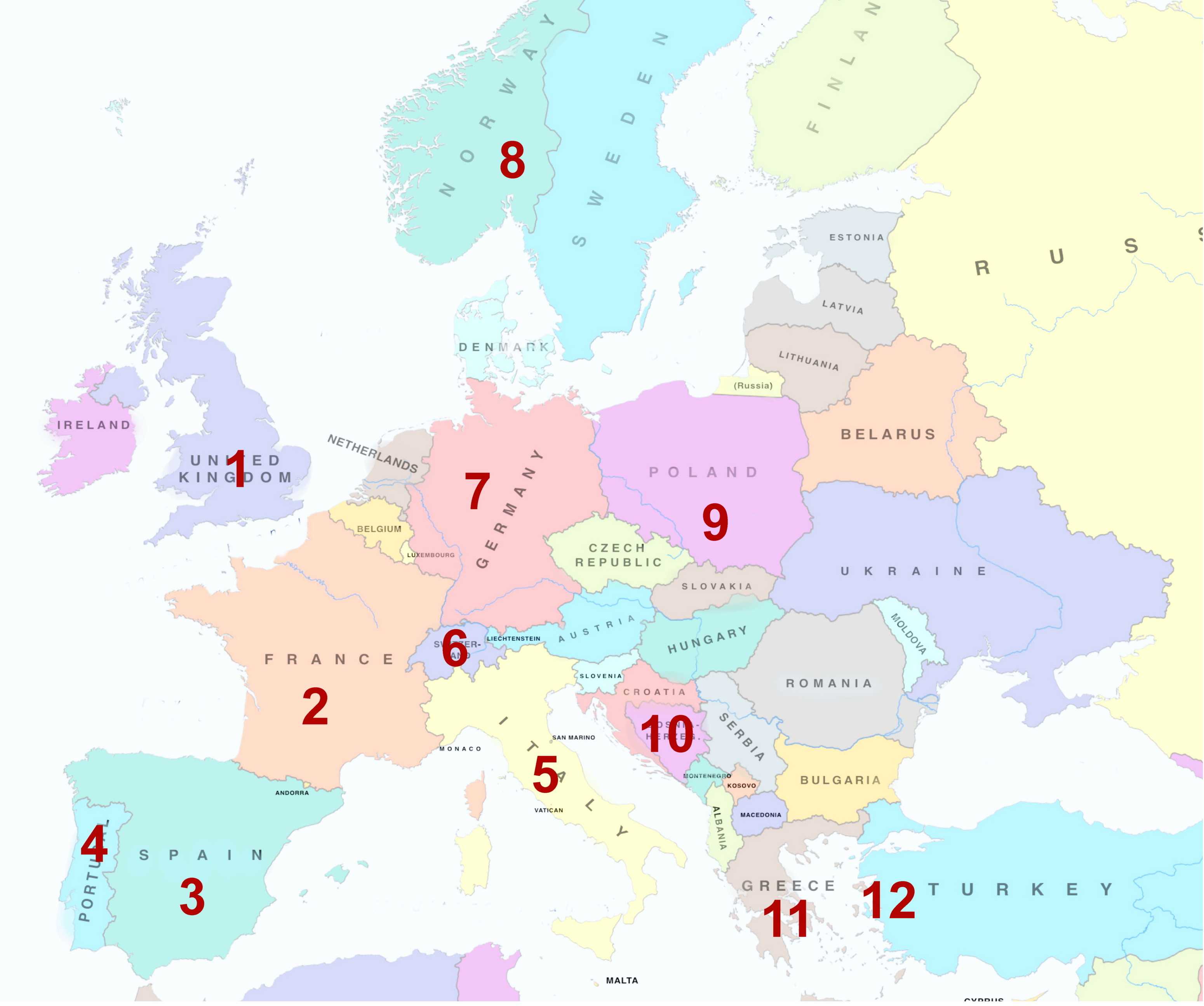
Catholic Pilgrimages in Europe Quiz
Most of these are general Christian Sites, but a few are related to well-known Marian apparitions. Numbers just relate to the country they are in, not positioning within it.
A label quiz
by Midget40.
Estimated time: 3 mins.
